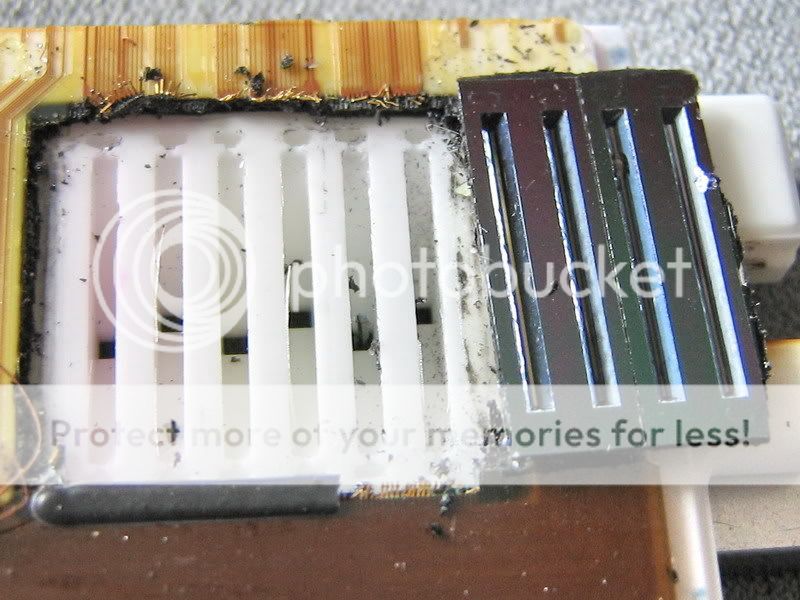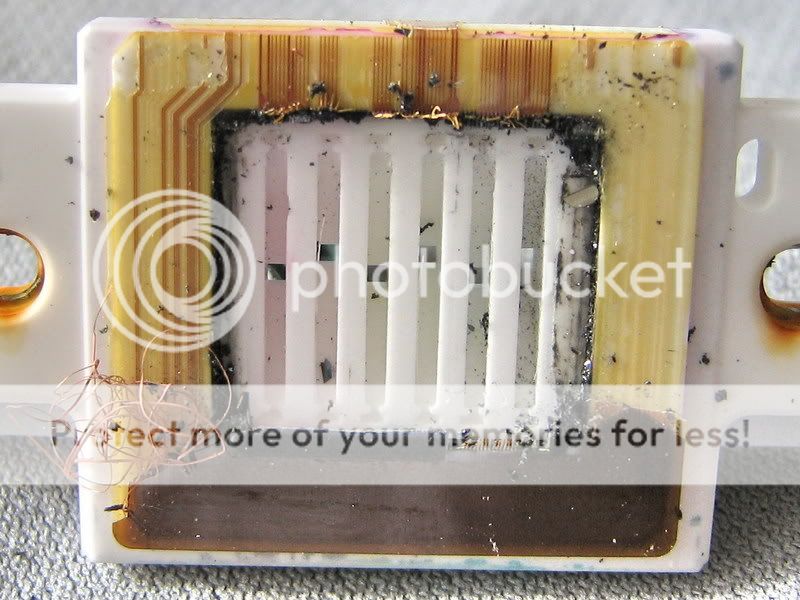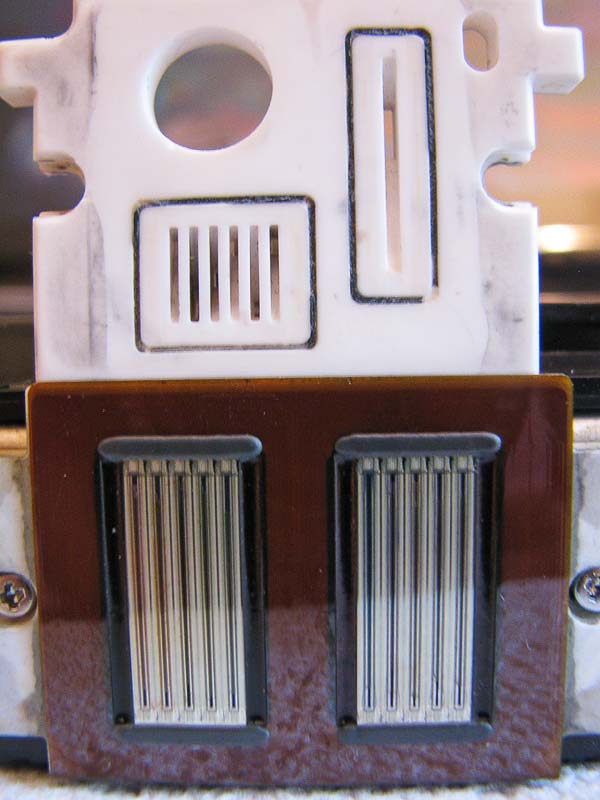- Thread starter
- #191
- Joined
- Feb 24, 2005
- Messages
- 1,669
- Reaction score
- 183
- Points
- 223
- Location
- North of Boston, USA
- Printer Model
- Canon i9900 (plus 5 spares)
No - the electronics had been removed.ghwellsjr said:Did you sand right through the nozzles and all the electronics?
If all Canon print heads are made the same way as this one, it appears that we can get quite aggressive with our cleaning techniques once the electronics have been removed. In any case, you won't be doing this unless the head can't be brought back to life with normal cleaning techniques, so what do you have to lose? I'm not suggesting that this is the first thing to try when you have a head clog.ghwellsjr said:Are you suggesting that we could use very hot water or other liquid for cleaning without risk of damage? But even if this were true for the parts that you show, it may not be true for the electronics region, would it?
I am also playing around with the electronics separately to see if there is anything to be learned about the construction of the print head itself. It appears that it is held together with adhesive, so that is why you have to be careful about how you treat that part of the print head. For example, several years ago I found that a hot water soak (at 160 deg F) would de-bond the heat sink from the nozzle plate.



